The Army Nurse is a american film of genre Documentary released in USA on 28 december 1945 with Gary Cooper
The Army Nurse (1945)

If you like this film, let us know!
The Army Nurse is a short documentary propaganda film commissioned by the US military to highlight the role and contributions of army nurses.
The film opens with a combat scene in the summer of 1945, when the war becomes a million men old (presumably the Battle of Okinawa) one of the soldiers is show getting wounded and the scene goes woozy. The narrator notes "This is the time for you to decide what you're gonna be: a soldier that gets injured and dies, or a soldier that gets injured and lives." The GI soon realizes that he is no longer on the battlefield but in a hospital, and he is being taken care of by a familiar face, the army nurse.
The film then commences a discussion of the army nurse's training and life during the war, beginning with basic training. The nurses had to go through the same BT regiment as the soldiers, learning how to scale walls, survive in the wilderness, and set up a hospital in the bush. They are sent to where ever they are needed, whether at home or overseas. It they are overseas they live in much the same conditions as the soldiers they minister to, sleeping in GI cots, in GI tents, and were the same uniforms and helmets, which they find various practical uses for. They also take the same time out to go to USO shows. The film ends with a short statement from the head of the Army Nurses Service, asking the audience to buy war bonds.
Actors
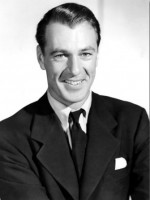
Gary Cooper
(Self (archive footage))
Comments
Leave comment :
Suggestions of similar film to The Army Nurse
There are 93 films with the same actors, 8965 with the same cinematographic genres, 8197 films with the same themes (including 442 films with the same 4 themes than The Army Nurse), to have finally 70 suggestions of similar films.If you liked The Army Nurse, you will probably like those similar films :

Hollywood on Trial (1976)
, 1h45Origin USA
Genres Documentary, Historical
Themes Documentary films about business, Documentary films about the film industry, Documentary films about historical events, Documentary films about cities, Political films
Actors John Huston, Walter Bernstein, Alvah Bessie, Lester Cole, Gary Cooper, Henry Daniell
Rating72%






Wings Up (1943)
, 20minutesGenres War, Documentary
Themes Transport films, Aviation films, Documentary films about war, Documentary films about historical events, Documentary films about technology, Political films, Documentary films about World War II, United States Armed Forces in films
Actors Clark Gable, Gilbert Roland, William Holden, Robert Preston, Brenda Marshall
Rating66%






Suggestion Box (1943)
, 9minutesOrigin USA
Genres Documentary
Themes Documentary films about war, Documentary films about historical events, Political films, Documentary films about World War II
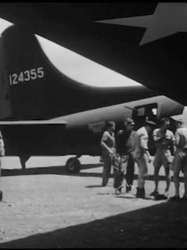
Since Pearl Harbor (1943)
, 10minutesOrigin USA
Genres Documentary
Themes Transport films, Aviation films, Documentary films about war, Documentary films about historical events, Documentary films about technology, Political films, Documentary films about World War II
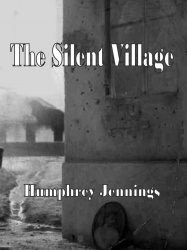
The Silent Village (1943)
, 36minutesDirected by Humphrey Jennings
Origin United-kingdom
Genres Drama, War, Documentary, Historical
Themes Documentary films about war, Documentary films about historical events, Political films, Documentary films about World War II
Rating69%





The film opens with a title card outlining the story of Lidice. It then moves on to an image of the stream running through the village of Cwmgiedd (half a mile from Ystradgynlais in west Wales), and an eight-minute opening sequence interspersed with images and sounds of everyday life in a community in the Upper Swansea Valley; men are shown working at the colliery, women engaged in domestic tasks in their homes and the inhabitants singing in the Methodist chapel. Most of the dialogue in this section is spoken in Welsh, with no subtitles provided. The section closes with another title card stating "such is life at Cwmgiedd...and such too was life in Lidice until the coming of Fascism".
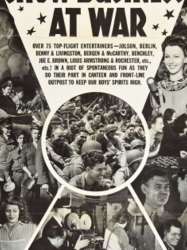
Show-Business at War (1943)
, 17minutesOrigin USA
Genres Documentary
Themes Documentary films about business, Documentary films about the film industry, Documentary films about war, Documentary films about historical events, Documentary films about cities, Political films, Documentary films about World War II
Actors Carole Lombard, Irving Berlin, Alfred Lunt, Loretta Young, Walt Disney, John Ford
Rating70%





 , 20minutes
, 20minutesDirected by Bernard Vorhaus
Origin USA
Genres Documentary, Historical
Themes Transport films, Aviation films, Documentary films about war, Documentary films about historical events, Political films, Documentary films about World War II, United States Armed Forces in films
Actors Art Gilmore, Ronald Reagan, Harvey Stephens, Craig Stevens
Rating51%





Most of the film is taken up with a short play in which a young pilot, portrayed by Ronald Reagan, is ordered on reconnaissance missions of the Pacific and encounters another plane which he can't tell is friendly or not. This plot is interspersed with animated segments illustrating the physical characteristics of the Japanese Zero and how it can be distinguished from an American plane.
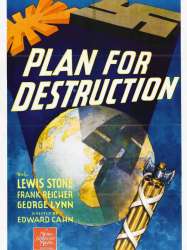
Plan for Destruction (1943)
, 22minutesDirected by Edward L. Cahn
Origin USA
Genres Documentary, Historical
Themes Documentary films about war, Documentary films about historical events, Political films, Documentary films about World War II
Actors Lewis Stone, Frank Reicher, Wilhelm von Brincken, Hans Heinrich von Twardowski
Rating62%






Negro Colleges in War Time (1943)
, 8minutesOrigin USA
Genres Documentary
Themes Documentary films about war, Documentary films about historical events, Political films, Documentary films about World War II
Rating55%





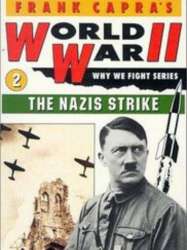 , 41minutes
, 41minutesDirected by Frank Capra, Anatole Litvak
Origin USA
Genres War, Documentary
Themes Documentary films about war, Documentary films about historical events, Political films, Documentary films about World War II
Actors Walter Huston
Rating69%





Le film présente et analyse la stratégie allemande pour conquérir l’espace vital hitlérien. Il met en évidence toutes les bassesses orchestrées par Hitler pour étendre petit à petit son empire, malgré les pactes de non-agression signés avec la plupart des pays européens.
 Connection
Connection